Corns vs. Warts
When you notice a growth on your feet or toes due to pain, irritation, or by accident in the shower, you need to immediately identify what it is to begin the proper treatment for healing.
With all the skin conditions that feet subject to, it’s essential to research all possibilities to make a correct self-diagnosis.
If unsure, see your doctor for an accurate diagnosis and treatment plan.
Plantar Wart
Plantar, or viral, warts are common and caused by coming in contact with infected surfaces.
They grow well in moist conditions, such as sweaty shoes, public swimming pools, and community showers.
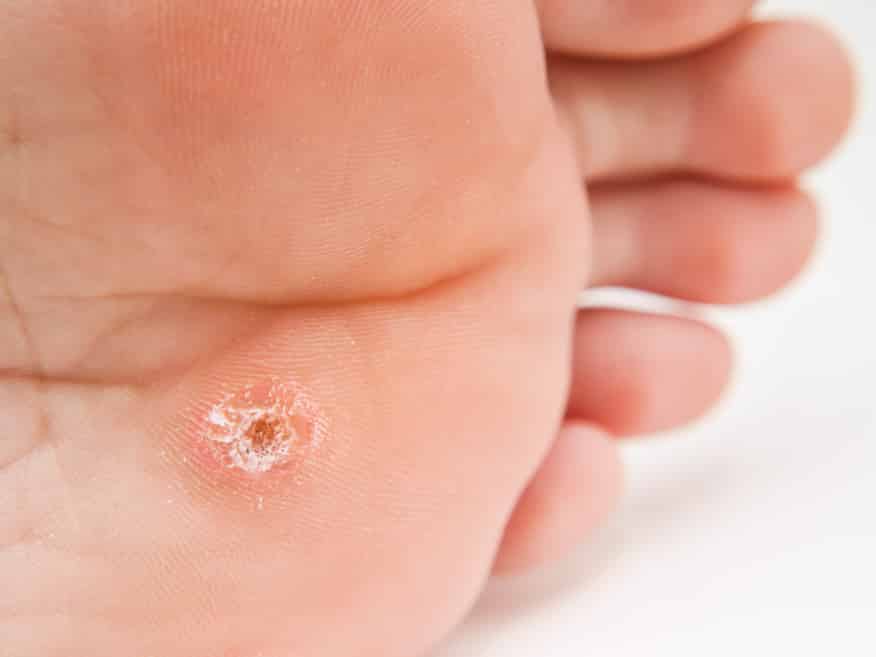
Plantar warts grow fast and deep into foot tissue located on the bottoms of feet.1William Bonnez. 146 – Papillomaviruses, Mandell, Douglas, and Bennett’s Principles and Practice of Infectious Diseases (Eighth Edition). 2015
They can sometimes be confused with corns, calluses, and Athlete’s foot.
If you’re not sure if it’s a corn or a wart, start by taking a simple test.
Plantar Wart Pinch Test
To perform the test, squeeze the sides of the lesion together gently towards the center. If it hurts, it’s a wart.
Corns vs. Warts – What is the Difference?
Push/Squeeze Test
For this test, push down on the lesion with your finger using gentle but direct pressure.
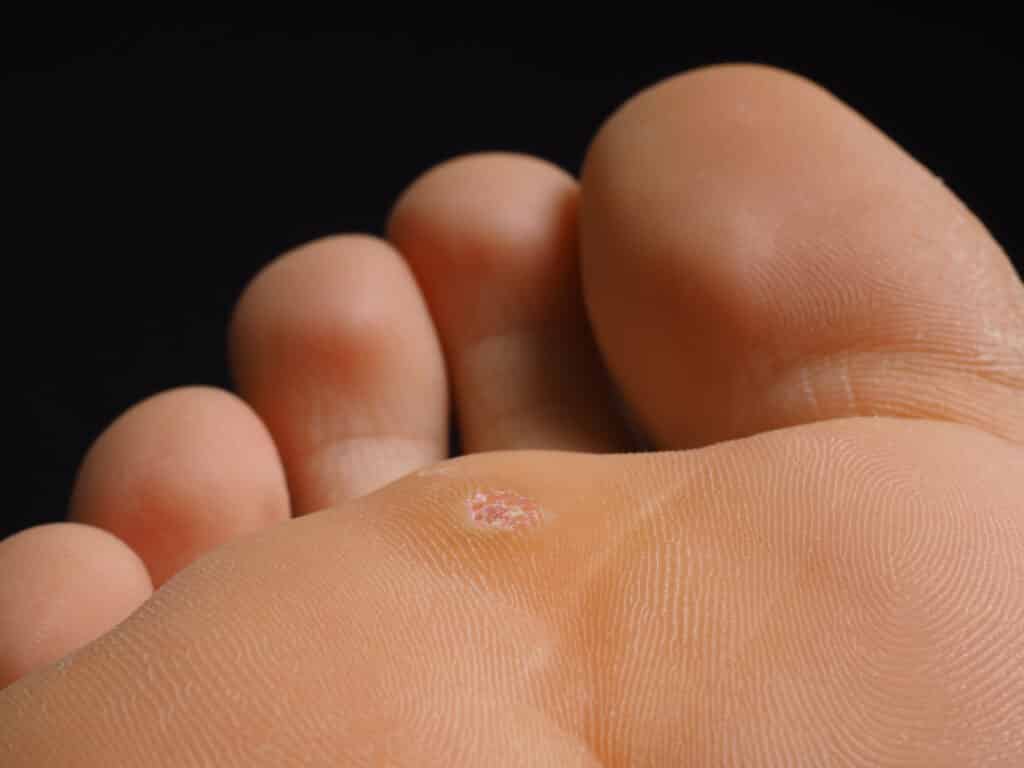
If it hurts when applying direct pressure, it’s more likely to be a corn.
A wart hurts more when lightly squeezing the sides together towards the center of the lesion.
Find the Skin Line
Skin line is a medical term and polite way of saying, “wrinkle.”
If the lesion goes around wrinkles (let’s stick with skin lines), it’s a wart.
Warts avoid and go around skin lines by forming jagged-looking ridges on the outside edges of the wart.
Corns will develop right through or directly on the skin line with no jagged edges.
One of the reasons corns hurt is because when they form on or through skin lines, the potential for bending toes at the skin lines creates more friction and irritation of the corn.
Timing
While warts seem to come out of nowhere and grow pretty fast, corns take a lot more time to grow.
Depending on the type of corn, it can take months or years to develop.
In most cases, warts come from a viral infection, the body’s way of responding to the human papillomavirus, or HPV.
Although continuous foot friction and pressure may contribute to the development of a wart, it’s not the primary cause as it is with corns.
Places Where Corns and Warts Appear
Toes
Hard corns appear on the tops of toes and hurt when rubbing against tight-fitting shoes.
Soft corns typically develop in between the fourth and fifth toes.
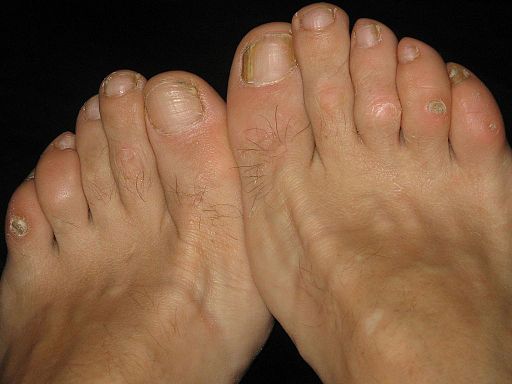
Warts may or may not appear adjacent to a bone.
If they look, it’s usually on the tops of the toes.
Feet
Corns are usually adjacent to bones, which is why you can find them on top of and in between toes.
Corns only develop on the feet.
Plantar warts grow on the heels or bottoms of feet after coming in contact with HPV-infected surfaces.
They can also develop and hide under calluses, making diagnosis and treatment even more difficult.
What Are the Similarities?
Similar to corns, warts are small and can also be painful.
However, there are more differences than similarities.
Warts appear as dry and rough skin lesions with jagged edges.
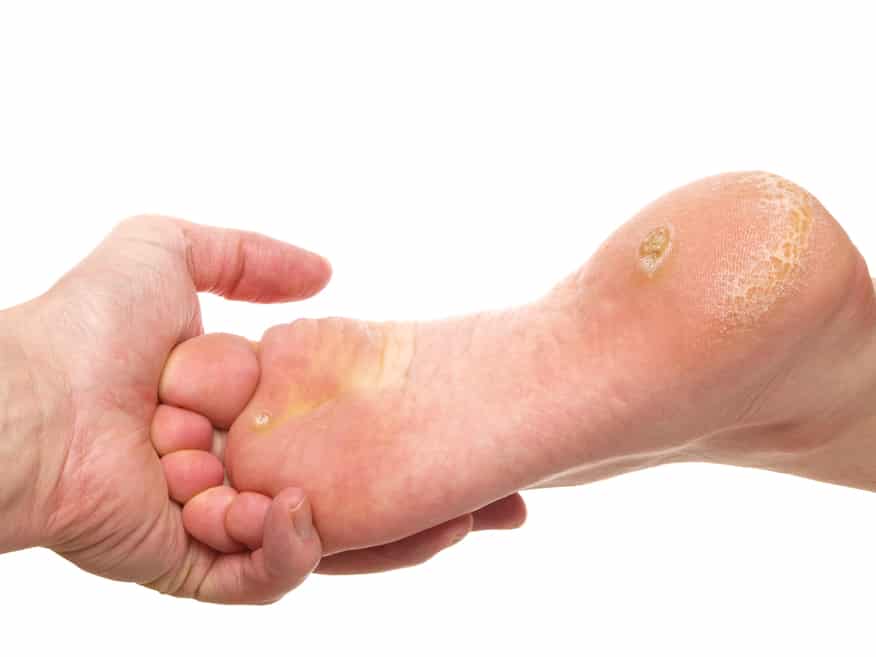
Upon closer examination, warts may have seeds, or the appearance of small black dots, which are blood vessels.
Warts can grow in clusters and do not have roots.
Corns have a smooth, round thick surface that looks like a small callus. Corns grow individually instead of in clusters. They can pop up anywhere on foot, with a tendency towards toes.
How to Treat a Wart
Wart removal and treatment is similar to getting rid of a corn.
We recommend a 10-minute daily foot soak to soften the wart.
Afterward, file or exfoliate the wart with a pumice stone or callus remover.
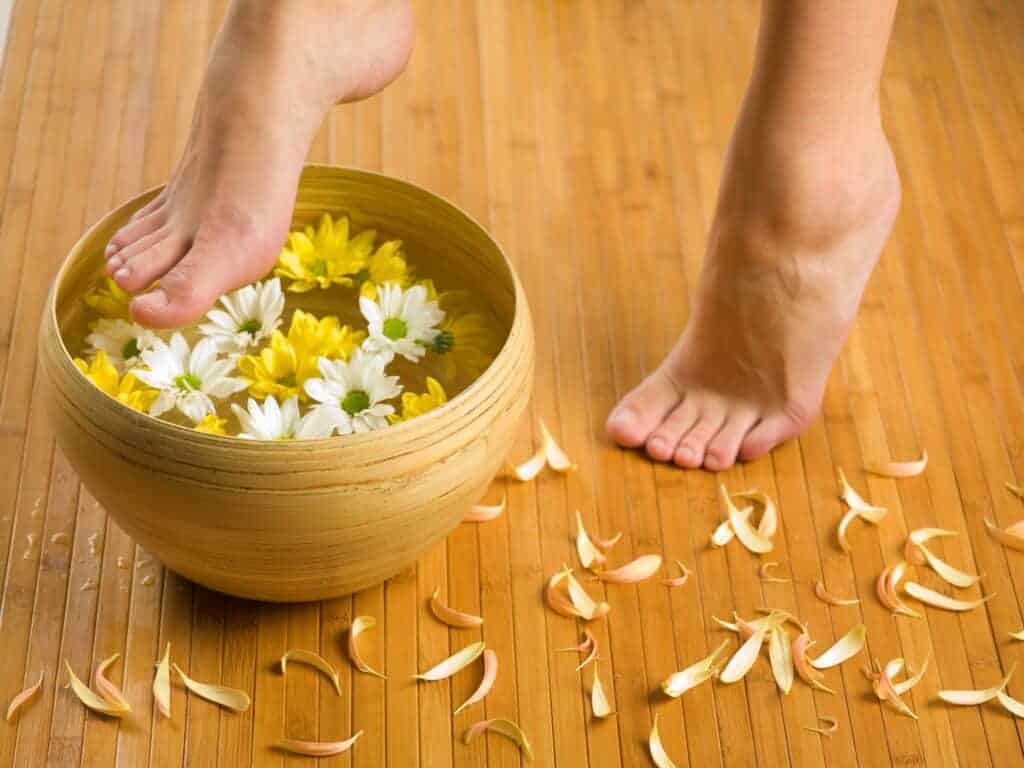
Apply a skin-softening agent, such as salicylic acid to the wart, which will eventually make it peel away.
A wart takes much longer to treat than a corn.
It can take approximately 12 weeks or more until you see any real progress.
Unfortunately, warts can come back at any time.
Can you Pop a Plantar Wart?
Never pop, pierce, scratch, or pick at plantar warts.
Doing so puts you at risk for infection or worse, spreading them to other parts of your body.
How to Treat a Corn
Treating a corn takes time, although not as long as warts.
Treatment for corns includes softening the hard, callused skin by using foot soaks, scrubs, and masks.2 Institute for Quality and Efficiency in Health Care (IQWiG). Corns: Overview
, InformedHealth.org. 2019
Once the callused skin softens, exfoliate, and apply a softening moisturizer that contains salicylic acid, urea, or essential oils.
Can you Use a Wart Remover on a Corn?
Most over-the-counter wart treatments use a softening agent plus exfoliation cream, lotion, or gel containing about 17% salicylic acid. Salicylic acid works to allow the hard layers of skin to peel away gradually.
You can use these gels to eliminate corns and calluses effectively.
Do Corns Spread?
Corns are not contagious and do not spread. Once you eliminate the source of pressure or friction, the treatment is more effective.
How to Prevent Corns and Warts

Some of the best ways to prevent corns are:
- Wear proper-fitting shoes with plenty of room for toes
- Avoid continuous pressure, friction or irritation of the feet and toes
- Exfoliate at least once weekly and moisturize feet daily
- Wear breathable, absorbent socks
Wart prevention tips:
- Keep skin your body, especially feet, well moisturized to prevent dry, cracked skin
- Wash hands frequently
- Don’t share razors, nail clippers, pumice stones or callus removers with anyone affected with warts
- Avoid contracting HPV by wearing shoes or sandals in public places and treating cuts/scrapes or insect bites immediately with an antiseptic
Who is Most at Risk for Corns and Warts?
For corns, anyone dealing with bone or joint conditions suffers from extraordinarily moist or dry skin, or wears ill-fitting shoes is at risk.
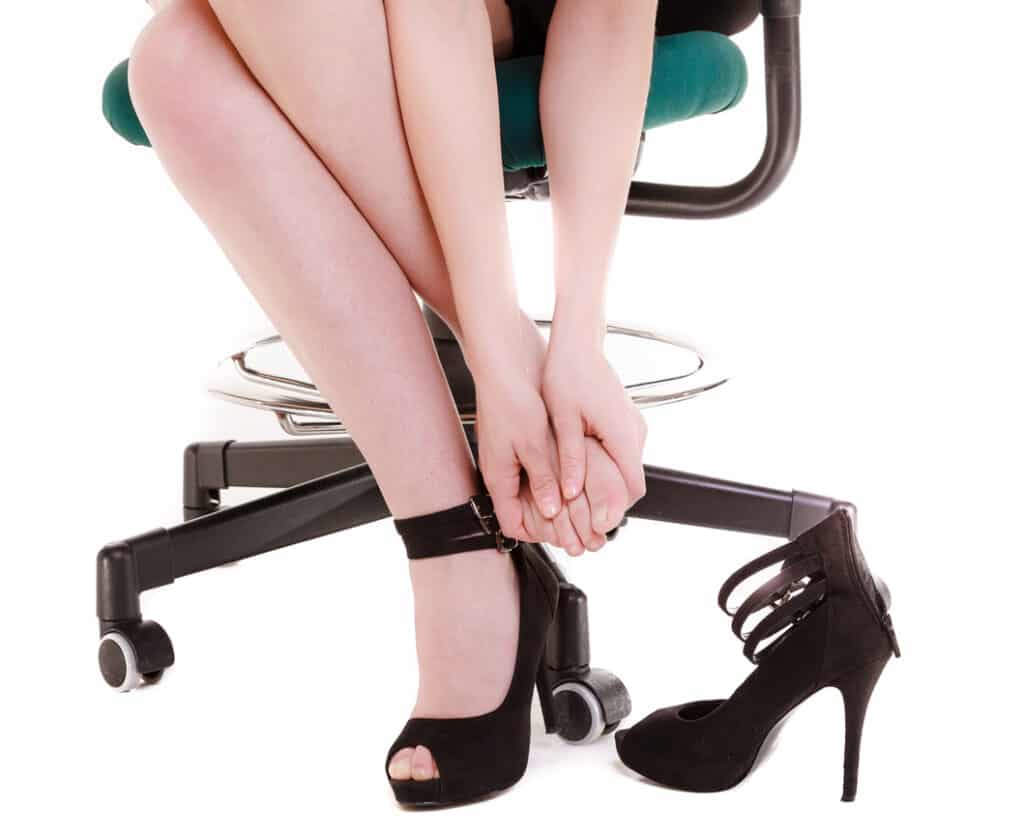
Those with weakened immune systems are more likely to contract the HPV virus, which leads to a higher probability of developing warts.
By adopting just a few simple preventative measures for the well-being of your feet, it decreases risks and keeps you safer from experiencing the pain and recovery time involved in treating corns or warts.
